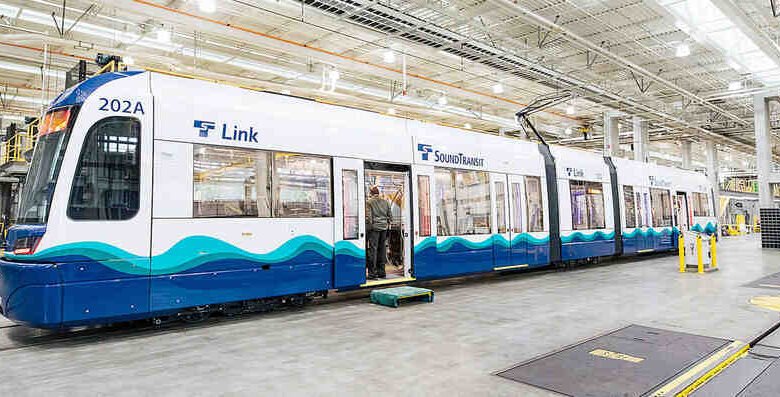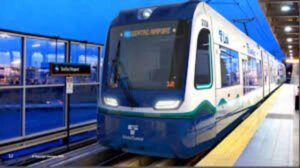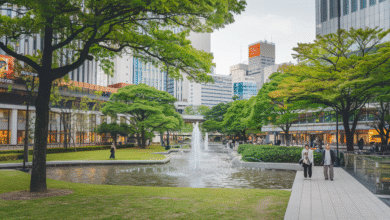Sound Transit: A Guide to the Public Transit System

Sound Transit is a public transit agency that serves the greater Seattle area, including cities like Tacoma, Bellevue, and Everett. It provides transportation options like buses, trains, and light rail to help people travel more easily across the region. Established in 1993, Sound Transit has grown to be a reliable and efficient way for people to commute, avoid traffic, and reduce their carbon footprint.
In this article, we will explore what Sound Transit offers, how it works, and why it’s important for the Seattle area. Whether you are a local resident or a visitor, this guide will help you understand how to use Sound Transit effectively.
What is Sound Transit?
Sound Transit is a regional transit authority in Washington state. It was created to provide public transportation services across three counties: King, Pierce, and Snohomish. The main goal of Sound Transit is to connect people to major cities and areas within the Puget Sound region. With its range of services, like buses, light rail, and commuter trains, Sound Transit helps reduce traffic congestion and pollution.
Sound Transit is known for its Link light rail system, which connects major places like downtown Seattle, Sea-Tac Airport, and the University of Washington. This system has been growing over the years, with plans to expand to more areas in the future. Additionally, Sound Transit operates Sounder trains and express buses that make travel more convenient for people living in the suburbs.
The agency plays a key role in making public transit more accessible and environmentally friendly. By offering multiple transportation options, Sound Transit encourages people to use public transport instead of driving, which helps reduce the number of cars on the road.
Benefits of Using Sound Transit
One of the main benefits of using Sound Transit is its convenience. With several transportation options, like buses, light rail, and commuter trains, you can easily get to where you need to go without worrying about traffic or parking. The Link light rail, for example, runs frequently, making it a reliable choice for commuters or visitors.
Another major benefit is that Sound Transit is eco-friendly. By choosing public transit, people help reduce air pollution and greenhouse gas emissions. Since Sound Transit’s trains and buses can carry many passengers at once, it reduces the need for multiple cars on the road, which is better for the environment.
Sound Transit is also cost-effective. Compared to the cost of owning and maintaining a car, using public transit can save money. Tickets are affordable, and there are several fare options depending on how often you use the service. There are also discounts for seniors, students, and people with disabilities, making it accessible to everyone.
Expansion Plans for Sound Transit
Sound Transit is continuously expanding its services to meet the growing needs of the region. The agency has several projects in the works, including the expansion of the Link light rail system. This expansion will make it easier for people in different areas to connect to the downtown core and other important locations.
One of the biggest projects is the extension of the light rail to neighborhoods like Northgate, Lynnwood, and Bellevue. This will allow more people to travel quickly and conveniently without having to rely on cars. The expansion plans also include adding more Sounder train services and increasing the frequency of buses in key areas.
With these expansions, Sound Transit aims to make public transit even more accessible and efficient. By offering more options, the agency hopes to encourage more people to use public transportation and reduce their reliance on personal vehicles.
How to Use Sound Transit
Using Sound Transit is simple, even if you’re new to the area. First, decide which type of transportation works best for your trip—whether it’s a bus, train, or light rail. You can use the Sound Transit website or app to plan your trip and check schedules. The app allows you to see real-time arrival times and find the best routes.
For tickets, you can pay with an ORCA card, which is a rechargeable card that works on all Sound Transit services. You can also buy single tickets at stations or pay through the app. Fares vary based on the distance traveled, but they are generally affordable.
When you’re on board, listen to announcements or check the screens for the names of upcoming stops. All Sound Transit services are accessible for people with disabilities, making it easy for everyone to use.
Conclusion
Sound Transit is an essential part of the Seattle area’s transportation system. It provides easy, eco-friendly, and affordable options for people to travel within the region. With continuous expansions and improvements, Sound Transit is working to make public transit even better for future generations.
Using Sound Transit not only saves time and money but also helps reduce traffic and pollution. Whether you’re a daily commuter or just visiting, Sound Transit is a great option for getting around the Puget Sound area efficiently and comfortably. As the system grows, more people will be able to enjoy the benefits of fast, reliable public transportation.
FAQs
Q: What areas does Sound Transit serve?
A: Sound Transit serves King, Pierce, and Snohomish counties in Washington state.
Q: How can I pay for Sound Transit services?
A: You can pay using an ORCA card, buy single tickets, or use the Sound Transit app.
Q: Is Sound Transit accessible for people with disabilities?
A: Yes, all Sound Transit services are accessible for people with disabilities.
Q: What is the Link light rail?
A: The Link light rail is a train system that connects key places in Seattle, including downtown and Sea-Tac Airport.
Q: Does Sound Transit have any expansion plans?
A: Yes, Sound Transit is expanding the Link light rail system and increasing bus and train services to reach more areas.




